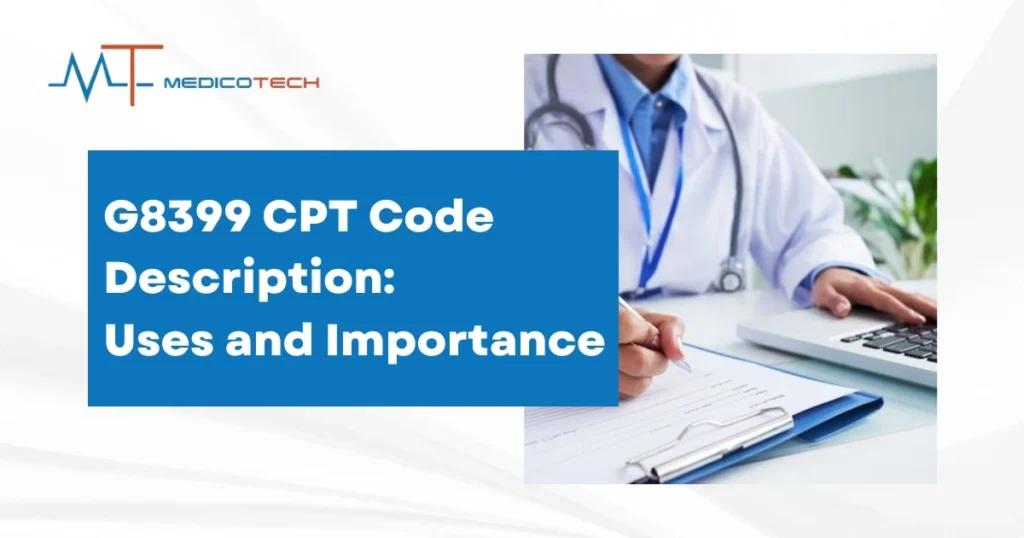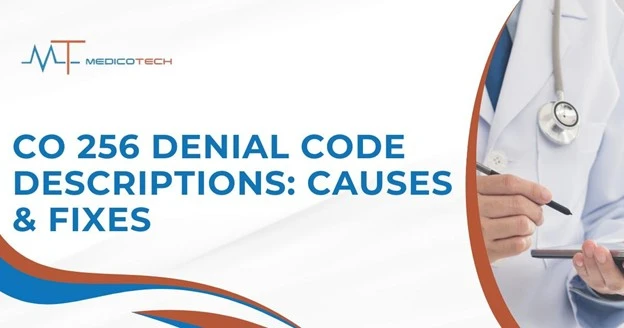The G8399 CPT code is an important part of medical billing and coding, often used in various healthcare settings. It is essential for healthcare professionals, medical coders, and billing specialists to understand what this code represents and how it is applied. In this detailed guide, we will explore the G8399 CPT code description, its usage, and how it impacts medical billing and reimbursement.
What is the G8399 CPT Code?
The G8399 CPT code is a miscellaneous code used in medical billing and coding. It typically refers to a specific medically necessary service that does not have a dedicated or more specific code in the Current Procedural Terminology (CPT) manual. This code is classified under the category of “unlisted services,” meaning it can cover a variety of procedures, diagnostic tests, or treatments that don’t fit into the existing CPT categories.
Understanding the Basics of CPT Codes
CPT codes, or Current Procedural Terminology codes, are used by medical professionals to document medical procedures, treatments, and services. These codes are standardized and managed by the American Medical Association (AMA). CPT codes are used to describe medical services provided during patient visits, which are essential for healthcare providers to receive reimbursement from insurance companies, including Medicare and Medicaid.
The G8399 CPT code falls under the G codes category, which is used for services not covered by specific codes in the standard CPT system. G codes are typically used by Medicare and other government insurers, particularly for ambulatory services, Medicare preventive services, and various other non-standard procedures.
When is the G8399 CPT Code Used?
The G8399 CPT code is primarily used when a healthcare provider must report a service that does not have a specific CPT code but is still a medically necessary service. These services may involve experimental treatments, services provided in a non-traditional setting, or special diagnostic tests that don’t yet have a designated code in the CPT system.
For instance, during office visits, a physician may use the 99213 CPT code for patients requiring a mid level examination, whereas the G8399 CPT code would apply when a service outside the standard billing codes is necessary, like an experimental treatment or a specialized test.
Some examples of when the G8399 code might be used include:
- Unlisted procedures: When a procedure is too new or uncommon to have an assigned CPT code, medical professionals may use the G8399 code to report the service.
- Customized treatments: Services tailored to an individual patient’s unique medical needs may require the G8399 code if no other code is more applicable.
- Diagnostic services: Certain tests, scans, or imaging procedures may require the use of G8399 when they don’t fit into the standard CPT categories.
It’s important to note that the G8399 CPT code should only be used when no other, more specific code applies to the service provided. Healthcare providers and coders should always verify that there is no other applicable code before using G8399.
How Does the G8399 CPT Code Affect Billing?
The G8399 CPT code plays a significant role in the billing and reimbursement process. Since it is a miscellaneous or unlisted code, it requires additional documentation and justification. Healthcare providers must provide detailed information about the service rendered when using this code, including:
- A clear description of the procedure or service
- Justification of its medical necessity
- Relevant clinical notes and supporting documentation
Insurance companies, including Medicare and private insurers, will evaluate this documentation to determine whether the service was medically necessary and if it meets the criteria for reimbursement. Because of its unlisted nature, the use of the G8399 code may result in delayed payments or additional follow-up from the insurer.
Documentation and Supporting Information
When billing for services using the G8399 CPT code, accurate and thorough documentation is essential. Insufficient documentation may lead to claim denials or delays in reimbursement. To avoid complications, follow these steps:
- Detailed clinical notes: Provide a comprehensive explanation of the service performed, including any diagnostic tests, treatments, or procedures.
- Medical necessity: Clearly justify why the service was necessary for the patient’s condition, and explain why it could not be represented by a more specific CPT code.
- Provider’s notes: Include any physician or healthcare provider’s notes that support the use of the G8399 code.
The more thorough the documentation, the smoother the reimbursement process will be. This not only ensures a higher likelihood of getting reimbursed but also prevents claims from being flagged for review.
G8399 CPT Code in Medicare and Medicaid
Medicare and Medicaid are two major government healthcare programs that rely heavily on accurate medical coding for reimbursement. For services involving the G8399 CPT code, providers need to follow specific guidelines for each program:
Medicare
- Coverage: Medicare will only cover services billed under the G8399 CPT code if they are deemed medically necessary and meet Medicare’s coverage criteria. The service must be a part of Medicare’s approved benefits.
- Documentation: Medicare may request additional documentation to support the use of this unlisted code. Ensure that you provide all necessary clinical records to avoid payment delays.
- Reimbursement: Payments for services billed using the G8399 code may be delayed, and the reimbursement rate may vary depending on the service.
Medicaid
- State-Specific Rules: Medicaid policies may vary by state, but in general, Medicaid will only pay for services that are medically necessary and appropriately coded.
- Justification: Medicaid will require healthcare providers to provide clear documentation that the service is medically necessary and that no other specific CPT code applies.
- Reimbursement Process: Like Medicare, Medicaid may delay payments for services billed with the G8399 code and may only approve partial reimbursement or deny claims altogether without proper documentation.
Key Takeaways
- The G8399 CPT code is used for miscellaneous, unlisted services that don’t have a more specific CPT code.
- Healthcare providers must provide thorough documentation to justify the use of the G8399 code, including clinical notes and medical necessity.
- Insurance companies, including Medicare and Medicaid, require additional verification before approving services billed with the G8399 CPT code.
- Use this code sparingly and only when no other more applicable code exists to avoid issues with claims and reimbursement.
By understanding the G8399 CPT code and how it fits into the broader world of medical billing and coding, healthcare professionals can ensure they are properly reporting their services and getting reimbursed accurately. Always stay up-to-date with the latest coding guidelines and ensure you provide the necessary documentation to avoid any issues with your claims.




